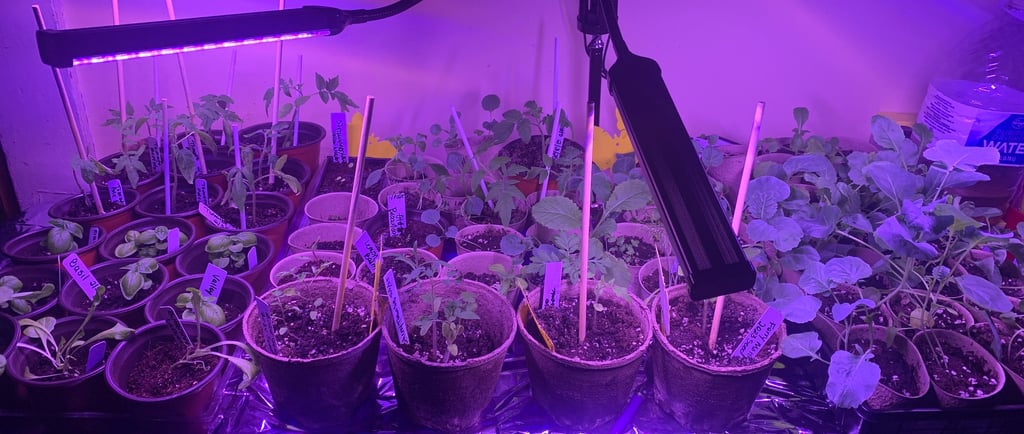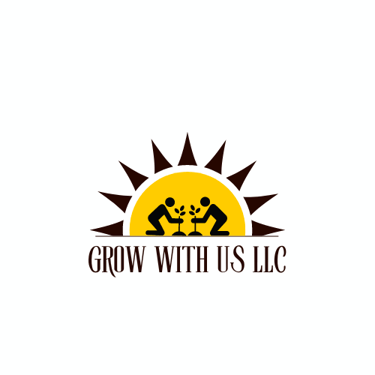Grow Lights: Maximizing Your Indoor Gardening Success


Understanding Grow Lights: What They Are and Their Purpose
Grow lights are artificial light sources specifically designed to support plant growth, particularly in environments where natural sunlight is insufficient. These lights play a crucial role in indoor gardening, as they provide the necessary spectrum of light that plants need for photosynthesis. Different types of grow lights are available on the market, each with unique characteristics that can simulate sunlight and cater to the needs of various plants.
One of the most popular types of grow lights is the LED (Light Emitting Diode) light. LEDs are energy-efficient, emit minimal heat, and offer a full spectrum of colors needed for plant growth. These lights are particularly effective for indoor gardening setups because they can be tailored to provide the optimal light for specific growth stages. Moreover, the longevity of LED lights makes them a cost-effective choice for growers.
Fluorescent grow lights, particularly T5 and T8 tubes, are another common option. They are suitable for small spaces and are widely used for seed starting and growing leafy greens. While not as energy-efficient as LEDs, fluorescent lights are versatile and can produce a significant amount of light in a relatively compact form.
High-Intensity Discharge (HID) lights, encompassing Metal Halide (MH) and High-Pressure Sodium (HPS) bulbs, are often favored by commercial growers due to their ability to produce intense light. These lights excel in promoting both vegetative growth and flowering periods, making them ideal for a wide range of plants. However, they require additional ventilation due to the heat they generate.
The application of grow lights is vital during early season planting when natural sunlight may not be sufficient. They can enhance growth rates and overall health, ensuring that plants thrive indoors or in greenhouses. By understanding the different types of grow lights and their functions, indoor gardeners can make informed decisions to optimize their gardening efforts.
The Advantages of Using Grow Lights for Year-Round Indoor Gardening
Utilizing grow lights for indoor gardening offers a multitude of advantages, particularly for those wishing to cultivate their plants year-round. One of the primary benefits is the ability to provide optimal light conditions for plants, especially during the darker months when natural sunlight is limited. Many plants, including herbs, vegetables, and flowers, require specific light wavelengths to thrive. Grow lights can closely mimic the sun's spectrum, ensuring that plants receive the necessary energy for photosynthesis, even in low-light conditions.
Additionally, grow lights can significantly promote faster germination and growth rates. Seeds that may otherwise take longer to sprout under natural light conditions can benefit from the consistent and controlled light environment provided by these artificial systems. With grow lights, gardeners can enhance their seed starting process, leading to healthier and more robust seedlings. This allows for more successful transplanting and a higher yield when the plants mature.
Another notable advantage is the ability to extend the growing season indefinitely. Grow lights create an ideal environment that enables individuals to grow their favorite plants regardless of external weather conditions, effectively allowing for seasonal gardening all year round. As a result, indoor gardeners can cultivate a variety of produce, ensuring that access to fresh vegetables and herbs is available at any time, ultimately enhancing the culinary experience.
Furthermore, grow lights make it feasible for urban dwellers or those with limited outdoor space to engage in indoor gardening. This opens up new avenues for sustainable living, as growing one’s own food can reduce reliance on store-bought produce and lower carbon footprints. Investing in grow lights not only boosts gardening success but also fosters a deeper connection with nature and food sources in an indoor setting.
Choosing the Right Grow Lights: Factors to Consider
When selecting the appropriate grow lights for indoor gardening, several key factors must be taken into account to ensure optimal growth conditions. The first consideration is the light spectrum, which plays a critical role in plant growth. Different stages of plant development—such as germination, vegetative growth, and flowering—require distinct wavelengths of light. For example, blue light promotes leaf development, while red light is vital for flowering and fruiting. Consequently, choosing grow lights that encompass a full spectrum, or using specific lights for targeted growth phases, can greatly enhance plant health.
Another important factor is wattage, which significantly impacts the intensity of light that plants receive. Higher wattage often equates to more lumens, providing brighter light that is beneficial for plant growth. However, higher wattage also leads to increased energy consumption, necessitating a balance between providing enough light and maintaining energy efficiency. Opting for LED grow lights is a wise decision, as they consume less power while delivering adequate light output, thus aligning with sustainability practices.
Space requirements also play a crucial role in grow light selection. The size of your indoor gardening area determines the type and number of lights you should use. For expansive spaces, multiple lights may be needed to cover all plants effectively. Furthermore, understanding the height and maturity of plants is essential; lights must be positioned at appropriate distances to avoid light burn while ensuring that all areas receive sufficient illumination.
Lastly, it is vital to match the grow lights to the plants being cultivated. Different species have varying light needs, which can influence the choice of grow lights. Researching specific light requirements for seedlings versus mature plants will guide your selection process, ensuring that your indoor garden thrives under the optimal conditions provided by the right grow lights.
Cost Considerations and Potential Challenges of Using Grow Lights
When contemplating the use of grow lights, it is essential to evaluate both the initial investment and the long-term operational expenses. The upfront costs of grow lights can vary significantly based on the type of lighting technology chosen, such as LED, fluorescent, or high-intensity discharge (HID) systems. LED grow lights, while usually more expensive initially, offer better energy efficiency and longer lifespans, which can result in lower energy bills over time. Conversely, traditional options like HID lights may have a lower upfront cost but can lead to higher electricity bills due to their increased energy consumption.
Beyond initial investment, growers must also consider maintenance costs and potential challenges associated with installing and utilizing grow lights. For instance, LED lights can sometimes require specific drivers or replacements after several years, which can add to costs. Additionally, while grow lights enhance indoor gardening success by providing essential light, they can create heat management issues if not monitored properly. Excessive heat can stress plants, leading to potential damage, including leaf burn or stunted growth. Implementing proper ventilation or heat-dissipation setups is crucial in addressing these challenges.
Another critical factor to consider is the timing of light exposure. Indoor plants require a consistent cycle of light and dark to mimic their natural environment, which is vital for their growth and overall health. Improper timing can disrupt this cycle, leading to adverse effects on plant development. Therefore, employing timers and light sensors can significantly benefit growers in maintaining the appropriate day/night cycles for their plants.
In conclusion, understanding the cost implications and potential challenges of using grow lights plays a critical role in maximizing the efficiency and success of indoor gardening. By carefully selecting the right lights and managing their operational needs, growers can achieve productive and healthy plants while optimizing costs in the long run.


